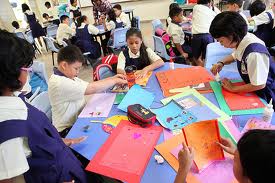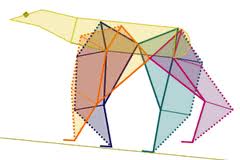Active GIF Creator 3.5 (AGIF) is a powerful, intelligible, compact and affordable gif maker for creating and optimization animated GIF- images, buttons, banners and other Web graphic that attract attention of your site visitors.
With Active GIF Creator you can:
Virtually every popular image editing software title comes with an option to create animated professional looking GIF images. Yet, most people find these built-in tools very counter- intuitive, complicated and almost impossible to use.
Download Active GIF Creator 3.5 (AGIF) sofware here
With Active GIF Creator you can:
Program features:
- make GIF and AVI- animations for the Web and presentation materials;
- make banners;
- make 2D and 3D buttons;
- make various graphic using effects and other program tools;
- add hidden signatures to GIFs to protect them from unauthorized use;
- develop creative imagination.
- makes animated GIF- files from set of BMP, JPEG, ICO, PCX, PNG, TGA, PSD- files, and Windows Metafiles;Reasons to buy Active GIF Creator.
- imports frames from other GIF- files;
- imports and exports AVI- files, ANI- files (animated cursors) and bitmap strips;
- supports clipboard operations for images (BMP);
- manages list of images;
- edits images using internal image editor or script editor;
- duplicates, merges, crops, resizes, rotates and flips frames;
- defines GIF- files global parameters: GIF size, logical screen size, background color index, number of loops in animation;
- defines offset, transparency, interlacement, delay, title and value "how to remove" for each separate image;
- applies effects to whole image or to its rectangle part;
- puts particles on image;
- uses image collections;
- edits color palettes;
- creates 2D and 3D button images;
- creates animation scripts;
- adds and removes text commentaries;
- optimizes size of GIF- files;
- shows GIF size and download time for different speeds of modems;
- allows to preview your GIF- file on Web pages with different backgrounds;
- adds hidden signatures to GIFs to protect them from unauthorized use;
- creates GIF- files from command line in batch mode;
- saves images of GIF- file as a set of BMP, JPEG, PNG, TIFF or TGA- files;
- saves created animation as a project in a file with extension .agif;
- creates maps for tag <MAP> in HTML;
- generates HTML links;
- supports localization tools for different languages.
Virtually every popular image editing software title comes with an option to create animated professional looking GIF images. Yet, most people find these built-in tools very counter- intuitive, complicated and almost impossible to use.
- Active GIF Creator has many useful features, like support of most popular image formats; internal image editor; rich image editing options; image effects; color palette support; import / export to other graphical formats; advanced open picture dialog (thumbnailer); GIF- file size powerful optimization; HTML image map editor; button creator; batch mode; image collections; animation scripts and others.
- The program's functionality in combination with the low cost has made it the first choice for many users and software evaluation websites. Plus, Active GIF Creator has a user- friendly, international interface and consumes very little system resources.
- All registered users are entitled to free technical support and minor upgrades.
Download Active GIF Creator 3.5 (AGIF) sofware here






























